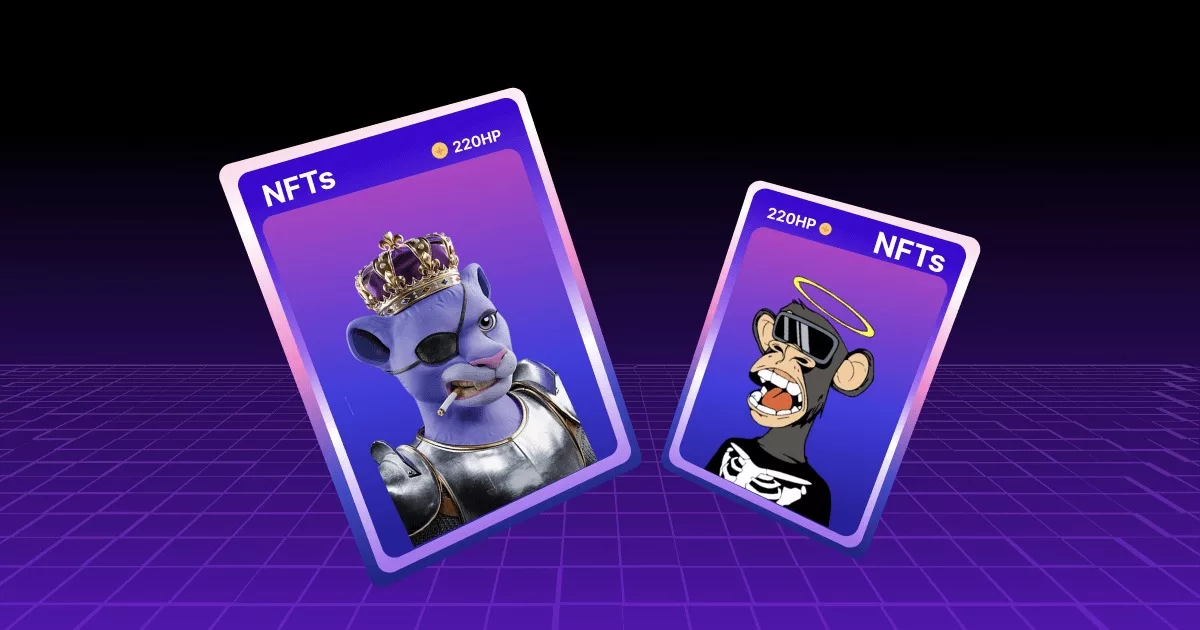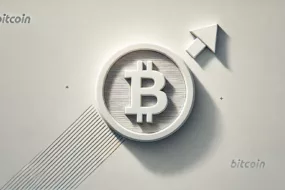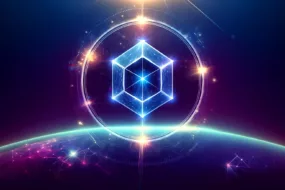
NFT Trading Cards are the newest sensation sweeping through the blockchain community. It allows you to own and trade unique digital assets like never before!
But, if you’re new to NFT trading cards, the concept, and technology may seem overwhelming.
Fear not, as we have you covered! In this blog post, we’ll explain everything you need to know about NFT trading cards, including their value and use cases.
So come along and join us on this exciting journey into the world of NFT trading cards!
Defining NFT Trading Cards
NFT Trading cards are digital representations of collectible cards that are owned and traded on blockchain platforms. They leverage the unique properties of NFT’s such as scarcity, provable ownership, and immutability, to offer collectors a new way to engage with their digital assets.
It has many benefits such as providing authenticity and ownership, exclusivity, easily tradable and acts as a liquid asset.
List few examples of nft trading cards
Few Examples of NFT Trading cards are:
- CryptoPunks
- NBA Top Shot
- Axie Infinity
- Art Blocks
- Garbage Pail Kids (GPK)
NFT stands for “non-fungible token,” a type of digital asset representing something unique and one-of-a-kind, like a digital painting, a video clip, or a tweet.
An NFT represents ownership of a specific digital item, which you can buy, sell, and trade like physical items.
What makes NFTs different from other digital assets is their authenticity and traceability, which blockchain technology ensures. This means that the ownership and history of an NFT can be easily verified and tracked, making it a valuable asset for collectors and investors.
There are different types of NFTs in the market — Digital Art, Music, Video, Virtual Lands, and of course, Trading Cards.
NFT Trading Cards are digital assets that allow individuals to own and trade unique virtual collectibles through blockchain technology.
Each NFT Trading Card has a unique identity and proof of authenticity, making them valuable and desirable for collectors.
Just like physical trading cards, NFT Trading Cards come in various forms and designs, and their rarity, demand, and historical significance often determine their value.
But, unlike traditional collectibles, the ownership of NFT Trading Cards is recorded and verified on a decentralized ledger, ensuring the transaction is transparent and secure.
NBA Top Shot and CryptoKitties are well-known examples of NFT Trading Cards.
What Makes NFT Trading Cards Valuable?
NFT trading cards derive value from various factors that make them unique and desirable to collectors.
1. Uniqueness
First and foremost, each NFT trading card is one of a kind, meaning that no other card in the world is exactly like it. The blockchain that underlies the creation and distribution of NFTs guarantees this rarity.
2. Authenticity
As NFT trading cards are verified on the blockchain, buyers can be confident they will get a genuine, unique item. This helps to prevent fraud and ensures that the value of the NFT trading card remains intact.
3. Market Demand
The value of NFT trading cards is also driven by their market demand. Just like physical collectibles, the value of NFTs can increase based on their popularity.
For example, a rare NFT trading card of a legendary athlete or musician might fetch a high price due to their fame.
4. Historical Significance
NFT Trading Cards can hold significant value if they came out during a specific time or had an involvement in significant historical events. This historical significance can increase their desirability and make them valuable to collectors and investors.
Please remember that the value of NFT Trading Cards is subject to rapid fluctuations, just like traditional trading cards.
With new NFTs trading cards constantly coming up, trends can quickly shift. As a result, it is vital to conduct thorough research, commonly referred to as DYOR (Do Your Own Research), before investing in NFT cards.
Applications of NFT Trading Cards
Collectors may purchase NFT cards to showcase them just like traditional hobbyists do with physical cards at conventions. At the same time, some consider them as investments and sell the ones that appreciate in value.
1. Collectibles
Collectors enjoy collecting them to showcase their rare and valuable digital assets. Many collectors value the aesthetic and artistic quality of the cards, making them an attractive addition to their digital collection.
2. Investment Purposes
NFT Trading Cards can also be bought and sold as a form of investment, with the expectation of earning a profit from their appreciation in value over time. The value of NFT Trading Cards can fluctuate, and investors keenly follow trends and market movements to make informed investment decisions.
3. In-Game Use
Some NFT Trading Cards can be used within certain games or applications, adding functionality to the collectible.
For example, in-game NFTs can give players unique abilities or grant access to specific levels or features in a game. This increases the utility and value of the card beyond just its artistic or collectible value.
Examples of NFT Trading Card Marketplaces
Several NFT trading card marketplaces exist where collectors can buy, sell, and trade their digital collectibles. These marketplaces serve as online platforms where NFT creators can showcase and sell their works to interested buyers.
One of the most popular NFT trading card marketplaces is OpenSea. OpenSea is a decentralized marketplace where creators can sell their NFTs directly to buyers without needing a middleman.
Another popular NFT trading card marketplace is NBA Top Shot. NBA Top Shot features unique digital trading cards of NBA players, which are authenticated on the blockchain and can be traded between collectors. Each NBA Top Shot card represents a unique moment from an NBA game, making them highly coveted by basketball fans.
Other marketplaces include Rarible, SuperRare, and AirNFTs.
As the market for NFT trading cards grows, new marketplaces will likely emerge, offering even more opportunities for collectors to buy, sell, and trade their cards.
How to Buy NFT Trading Cards?
Buying NFT trading cards can be an exciting and potentially lucrative investment for collectors.
Here’s a step-by-step guide on how to purchase NFT trading cards,
1. Choose Marketplace
There are several NFT trading card marketplaces, such as OpenSea, NBA Top Shot, Rarible, and SuperRare. Each platform has unique features and a selection of NFTs, so it’s essential to research and choose one that fits your interests.
2. Create a Wallet
To buy NFT cards, you’ll need to create a crypto wallet that supports the blockchain used by the marketplace. Common wallets include MetaMask, Coinbase Wallet, and Trust Wallet.
3. Add Cryptocurrency to your Wallet
NFTs are typically bought using cryptocurrencies such as Ethereum, so you must add funds to your wallet to make purchases.
4. Browse and select NFT Trading Cards
Once you’ve added funds to your wallet, you can browse the marketplace for NFT trading cards that interest you. Each NFT will have a unique identifier, which you’ll need to copy to make a purchase.
5. Buy the NFT Trading Card
Paste the NFT’s identifier and complete the transaction using your crypto wallet. The NFT trading card will then be transferred to your wallet.
Conclusion
NFT trading cards represent a revolutionary new digital collectible form. Leveraging blockchain, these unique and one-of-a-kind digital assets have captured the attention of collectors, investors, and creatives’ attention.
NFT trading cards offer a versatile and exciting new avenue for creators and collectors to connect and transact.
As the market for NFTs continues to grow and evolve, it’s clear that these digital collectibles will play an increasingly important role in the world of art, culture, and commerce.
FAQs
1. What are NFT trading cards, and how do they work?
NFT trading cards are digital collectibles authenticated and secured on the blockchain.
Each NFT trading card is unique and can be bought, sold, and traded like physical collectibles. They work by leveraging blockchain technology to guarantee the authenticity and uniqueness of each card, making them highly coveted by collectors.
2. How can NFT trading cards contribute to a more decentralized ecosystem in the blockchain?
NFT trading cards can contribute to a more decentralized ecosystem in the blockchain by allowing creators and collectors to connect and transact without intermediaries such as galleries or auction houses.
By leveraging blockchain, NFTs enable direct peer-to-peer transactions, reducing the influence and control of centralized entities and empowering individuals to take control of their creative output and financial opportunities.
3. How can one ensure the authenticity of an NFT trading card?
The authenticity of an NFT trading card is guaranteed by the blockchain technology that underlies it. Each NFT is verified on the blockchain, ensuring it is unique and cannot be replicated or duplicated.
Buyers can check the blockchain record to ensure the authenticity of an NFT trading card before making a purchase.





